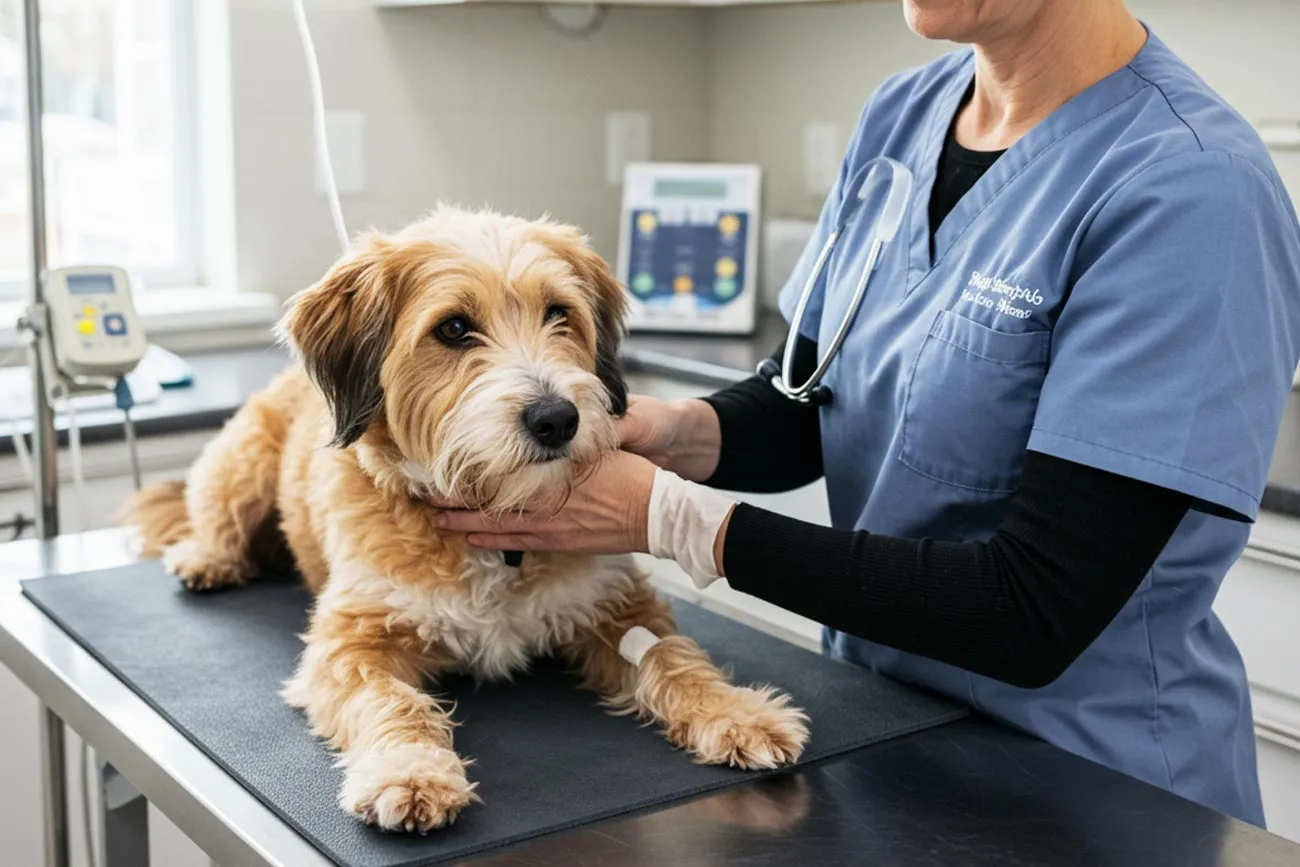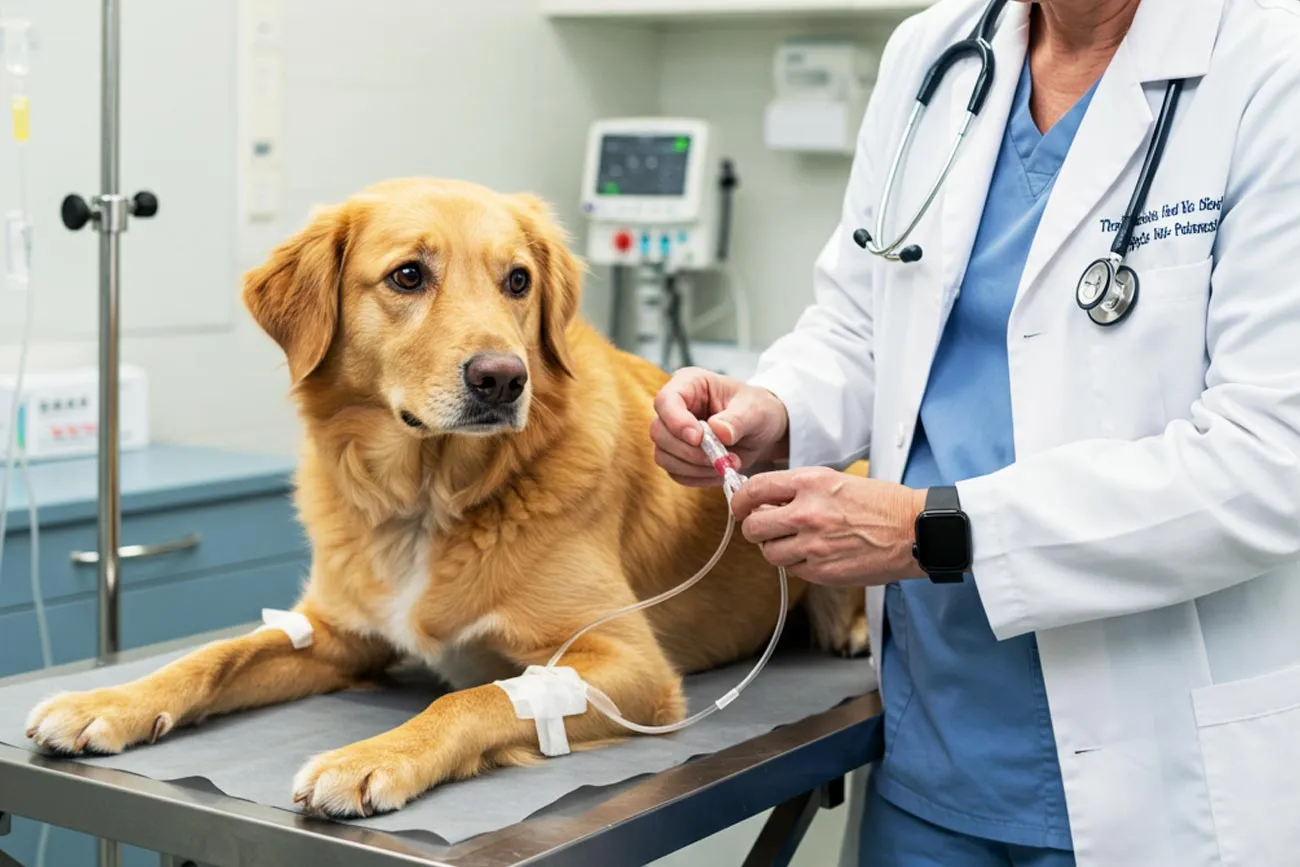
Canine parvovirosis: prevention, symptoms, care, and cure
Did you know that canine parvovirus can remain active in the environment for months, putting even the most protected puppies at risk? Find out now how to shield your dog from canine parvovirosis!
Imagine the anguish of seeing your little companion, once full of energy, struggling with intense vomiting and bloody diarrhea – this is the terror that canine parvovirosis can bring to any pet owner. Stay with us and learn, in a practical and caring way, everything you need to prevent, identify, and face this feared disease.
What is canine parvovirosis?
Canine parvovirosis is a disease caused by Canine Parvovirus type 2, an extremely resilient agent that attacks mainly the cells of the gastrointestinal tract and the immune system. Discovered in the 1970s, it quickly spread worldwide, affecting dogs of all ages but being especially lethal in puppies without a complete vaccination schedule.
- Mode of action: the virus invades intestinal cells, causing severe inflammation and preventing nutrient absorption.
- Main target: dogs under six months of age, whose immune systems are still developing.
- Environmental survival: can persist in soil, feces, clothing, and surfaces for up to 6 months or more.
Clinical signs and risks
Identifying canine parvovirosis early makes all the difference in the prognosis. Keep an eye out for:
- Extreme lethargy: your pet becomes apathetic, avoids interaction, and loses interest in play.
- Frequent vomiting: which may progress to episodes with blood, speeding up dehydration.
- Severe diarrhea: often with mucus or blood, indicating intense damage to the intestinal lining.
- Rapid dehydration: a major warning sign, as it is the leading cause of complications and death.
- Cardiac involvement in puppies: in rare cases, the virus can reach the heart, causing myocarditis.
Pro tip for owners: if you notice any changes in appetite, behavior, or bowel habits, consult a veterinarian immediately!
Transmission routes
The parvovirus is notorious for its ability to spread with ease:
- Direct contact: between infected and healthy dogs.
- Indirect contact: through contaminated feces, utensils, soil, and even footwear.
- Mechanical vectors: insects and rodents can carry the virus on their paws and bodies.
Areas with high animal traffic, such as kennels and parks, are critical points. Maintaining hygiene and access control is essential to break the contamination cycle.
Prevention: vaccination and hygiene
Vaccination is the cornerstone of combating canine parvovirosis:
- First dose: at 6–8 weeks of age.
- Boosters: between 10–12 and 14–16 weeks.
- Maintenance: annual dose from the first year of life onward.
Additionally, adopt rigorous cleaning practices:
- Disinfect floors and utensils with sodium hypochlorite–based solutions.
- Avoid areas with heavy dog traffic for puppies that have not yet completed their vaccination schedule.
- Always clean your dog’s paws and walking gear when you return home.
Small gesture, big protection!

Treatment and support
There is no specific drug to eliminate the canine parvovirus; the focus is on supportive care:
- Intense rehydration: intravenously, to replace fluids and electrolytes.
- Antibiotics: to prevent secondary bacterial infections.
- Antiemetics and antipyretics: to control vomiting and fever, improving comfort.
- Assisted nutrition: light diets or, if necessary, parenteral nutrition.
- Strict isolation: to protect other animals and prevent new infections.
The sooner canine parvovirosis treatment begins, the greater the chances of full recovery.
The human side: support and empathy
Facing canine parvovirosis is an emotional marathon. Fear, anxiety, and even guilt can overwhelm the owner. Seek support in adoption groups or clinics that offer psychological guidance for pet owners. Sharing experiences with those who have been through it helps ease the anguish and strengthen hope.
Final tips for dedicated owners
- Always keep your vaccination card handy and set reminders on your phone.
- Adopt a light, frequent cleaning routine, avoiding the buildup of dirt that could harbor the virus.
- Monitor your dog’s behavior daily and note any changes, no matter how small.
- Consider spaying or neutering: spayed/neutered dogs are less likely to roam and encounter risky environments.
Understand that…
Protecting your dog from canine parvovirosis is, above all, an act of love and responsibility. With vaccinations up to date, heightened attention to early signs, and proper hygiene measures, you ensure your pet lives a healthy and joyful life.
Share this article on your social networks, leave your comment with questions or stories of overcoming challenges, and explore more Adore Pets content to keep learning. Together, we are stronger in the fight against canine parvovirosis!



